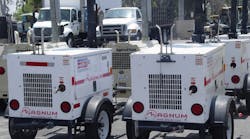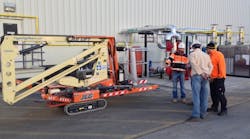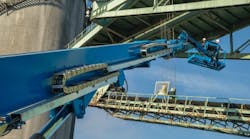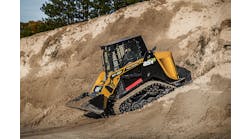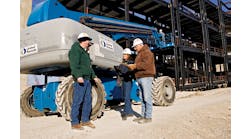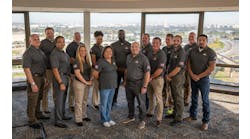Rental equipment demand remained most stable in the first quarter of 2017 with rental revenue growth the highest in seven quarters, according to the Baird/RER first quarter of 2017 rental equipment industry survey. Pricing pressures remain widely cited. Rates remain relatively flat year over year for the eighth consecutive quarter. Respondents said expectations are for modest improvement in 2017.
Utilization was slightly higher compared to the first quarter of 2016, respondents said. Average rental revenue growth was 6.4 percent year over year in 1Q17, compared to the last quarter’s 5-percent year-over-year growth. Average rental rates declined modestly according to respondents, falling 0.6 percent year over year, the eighth straight quarter within a range between -1 percent and +1 percent.
Fleet utilization improved about 80 basis points year over year but fell about 520 basis points sequentially because of seasonality based on severe winter weather. Utilization was lowest in Canada, the Midwest and the Northeast.
Unit sales climbed 0.3 percent year over year in the first quarter, equal to the 0.3-percent gain in the fourth quarter, also on a year-over-year basis. The cost of new units jumped 3.1 percent, compared to Q416’s 2.1-percent hike.
Respondents expect a 5-percent increase in fleet purchases in 2017, up from a 2.6-percent increase expected in the most recent quarter. Purchases of large earthmoving equipment is expected to increase 8 percent, and access equipment 2 percent. Respondents expect rental rates to increase 1.5 percent in 2017, although rate pressure remains widely cited.
Change in rental rates and cost of new equipment is the top 2017 business risk by respondents (37 percent), followed by rising interest rates (19 percent), government regulations (15 percent) and weakening end market demand (15 percent).
Respondents to the survey primarily serve non-residential construction and industrial markets. About 47 percent of participating companies generate annual revenue of less than $15 million, while firms with more than $50 million in revenue accounted for 19 percent of respondents. Respondents are evenly distributed across the United States, with some operations in Canada and other international locations.
Here are a few selected comments regarding rental revenue growth expectations:
- “Market is on the rise due to increasing population, rebounding oil and gas and infrastructure improvements.”
- “Our business has increased due to a strong highway program and housing starts in our region.”
- “Things are picking up a bit. People are expecting two to three years of activity before another decline.”
In response to flat rental rates, here are a few comments:
- “There has been a disturbing trend to lower rental rates on everything, despite the item cost and availability. Ridiculous mentality for sustaining any sort of business. Poor business models.”
- “Big box retailers are lowering rates below street level.”
- “Lots of equipment in yards (too much fleet).”
The utilization rate for access equipment, which accounted for 33 percent of survey revenue) increased to 57.5 percent from 56.9 percent in the Q116 survey, while the utilization for earthmoving equipment, which also accounted for 33 percent of survey revenue, increased to 55.2 percent from 49.8 percent in the Q116 survey.
Revenue growth was strongest in the South and West and weakest in the Northeast, Midwest and Canada. Utilization rates were highest in the South, lowest in the Midwest and Canada. Growth outlooks are highest in the Midwest and South, weaker in Canada. Rental rate growth expectations are highest in the South and Midwest.
